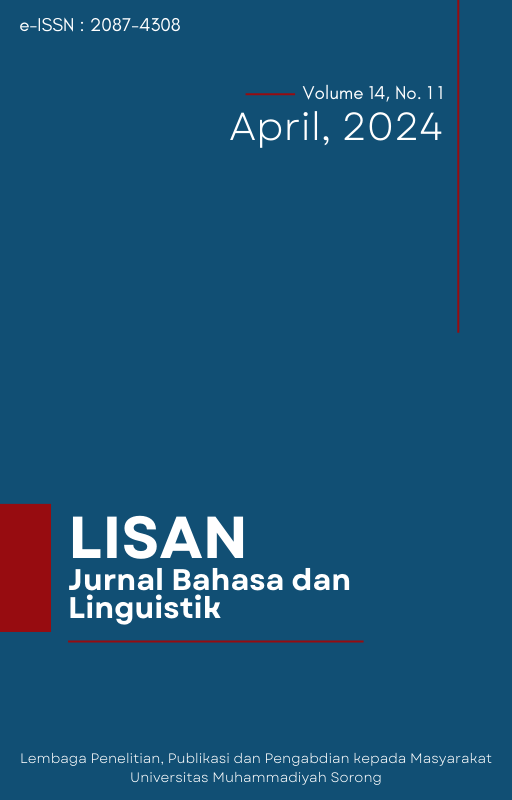A Discourse Analysis Of Marielle’s Language Attitude To Overcome Her Anxiety In Danielle Steel’s Novel “Vanished” (A Psycholinguistic Study)
DOI:
https://doi.org/10.33506/jbl.v13i1.2667Abstract
This thesis discusses a Vanished novel by Danielle Steel. The writer was interested to analyse this story because it talks about a woman who has got anxiety about her dating and marriage. But she doesn’t find the happiness that she hopes. The writer found a challenge to know further about how is Marielle’s language attitude to overcome her anxiety as implied in the novel. There is a problem that is analysed in this thesis: How is Marielle’s language attitude to overcome her anxiety in Danielle Steel’s novel “Vanished”? To achieve the objectives of the thesis, the research method was the descriptive qualitative method. The primary source is obtained from the novel, and the second sources are books and websites that are related to the theories of anxiety. To answer the problem above, the writer uses the approach of how to overcome anxiety. Based on the analysis, it can be concluded that in the novel “Vanished” Marielle overcomes her anxiety related to some stronghold mechanism on the anxiety that is explained by Freud, such as repression (the release without deliberately something of consciousness), projection (consider an impulse that is not god as not theirs), Regression (back to the early period of this life more fun), rationalization (involves understanding the behaviour of our return to making it more rational and acceptable), removal (moving impulses towards other objects that can be satisfactory unavailable Id), isolation (avoid the feeling that unacceptable by releasing them from events should they bound), undoing (do the behaviour in effort to prevent impulse not acceptable).
References
Adjei, S. B. (2013). Discourse Analysis: Examining Language Use in Context. The Qualitative Report, 18(25), 1-10. https://doi.org/10.46743/2160-3715/2013.1502
Carla, W. (2008). Introducing qualitative research in psychology. Berkshire: McGraw–Hill Education.
Clark, H, H & Clark, E, V. (1997). Psychology and Language: An Introduction to Psycholinguistics. United States of America: Harcourt Brace Jovanovich.
Eagly, A. H., & Chaiken, S. (1993). The psychology of attitudes. Harcourt brace Jovanovich college publishers.
Eriyanto. 2015. Analisis Wacana: Pengantar Analisis Teks Media. Yogyakarta: LKiS Pelangi Aksara
Bohner, G., & Wanke, M. (2002). Attitudes and Attitude Change (1st ed.). Psychology Press. https://doi.org/10.4324/9781315784786
Kridalaksana, H. (2013). Kamus Linguistik (edisi keempat). Gramedia Pustaka Utama.
Hornby, A. S. (1995). Oxford Advanced Learner’s Dictionary of current English. Oxford: Oxford Univ. Press, 1974. 1055 p.
Öztürk, G., & Gürbüz, N. (2014). Speaking anxiety among Turkish EFL learners: The case at a state university. Journal of language and Linguistic Studies, 10(1), 1-17.
Garrett, P. (2010). Attitudes to language. Cambridge University Press.
Potter, J. (2003). Discourse analysis and discursive psychology. In P. M. Camic, J. E. Rhodes, & L. Yardley (Eds.), Qualitative research in psychology: Expanding perspectives in methodology and design (pp. 73–94). American Psychological Association. https://doi.org/10.1037/10595-005
Shao, X. (2014). A study of Chinese college students’ English reading anxiety. American Journal of Educational Research, 2(5), 299-303. http://pubs.sciepub.com/education/2/5/10
Sudjiman, P. H. M. (1998). Bunga rampai stilistika. Pustaka Utama Grafiti.
Downloads
Published
How to Cite
Issue
Section
License

This work is licensed under a Creative Commons Attribution-NonCommercial-ShareAlike 4.0 International License.





